Violets of the "Ballerina" variety: description and their cultivation
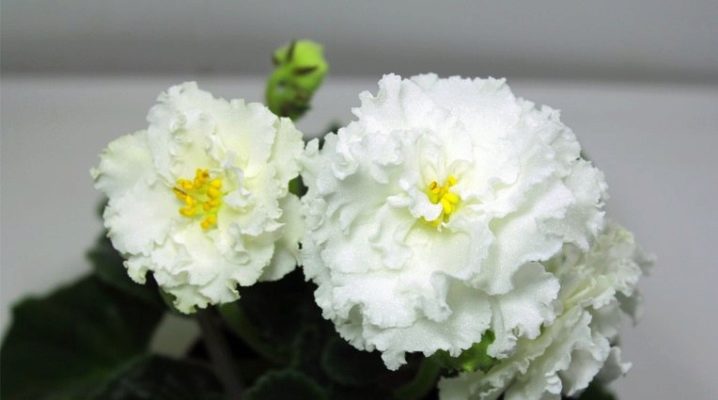
Indoor violets are considered the most common plants that are chosen for updating and complementing the interior. Thanks to the work of breeders, many different types of this flower have been bred. Among the huge variety, it is worth paying attention to the violet "Ballerina".
Peculiarities
Officially, the "Ballerina" variety is a Saintpaulia and has all the characteristic features inherent in representatives of this category of flora. Saintpaulia is part of the Gesneriaceae family, representing herbaceous plants with beautiful and lush flowers. Violet is the second name of plants belonging to this genus. The "RS-Ballerina" variety appeared due to the efforts of the breeder Svetlana Repkina.
The flower of amazing beauty immediately attracted the attention of both professional and novice florists. The plant began to appear frequently at thematic exhibitions and receive well-deserved awards due to its high aesthetic qualities.
Important! There is a variety called "LE-Ballerina" (the second name is "Fuchsia Ballerina"). This type of plant is often confused with the "RS-Ballerina" violet, but these are different representatives of the flora. Instead of a snow-white color, Fuchsia Ballerina blooms with vibrant purple buds, with a white edging around the edge of each petal.
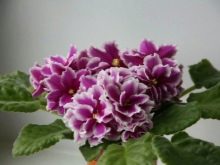


It is worth paying attention to the description of the "Ballerina" variety. The plant got its name due to its snow-white and lush color, reminiscent of a ballerina's pack. Bulky buds with double petals almost completely cover the shrub during the flowering period. The size of one basket reaches 7 centimeters. Due to the arrangement of the petals in several rows, the flowers are voluminous and expressive. Like other representatives of this genus, the core is colored bright yellow.
With proper care and comfortable conditions, you will notice that the violet almost does not stop flowering (breaks are rare and very short). After the old flowers wither, young flower stalks begin to form on the shrub. On a healthy plant, a snow-white terry decoration lasts for about 2 months. The only time when the violet will not bloom so profusely is in winter. At this time of the year, all plant processes slow down significantly. The first flowers begin to appear about 1 year after planting.
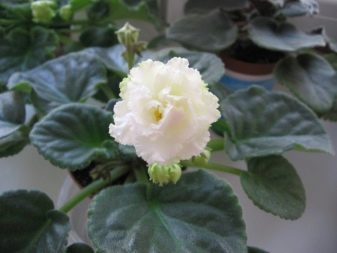
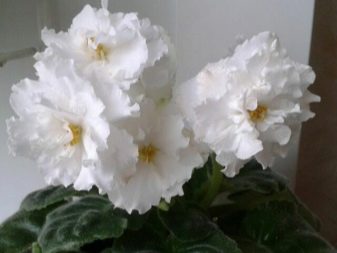
All plants belonging to the genus Saintpaulia have almost the same leaves. They are painted in a rich, dark green color, and are also covered with numerous small and soft villi. In the process of development, the plant forms a neat rosette around itself, the height of which varies from 20 to 40 centimeters. The oval shape of each sheet is complemented by wavy edges.

How to grow?
Light and location
The "RS-Ballerina" variety feels great on the windowsill. This is the standard arrangement for indoor flowers. It is best to move the pot closer to the window so that the plant gets maximum sunlight. If you decide to put the container on a rack, place it in the first row. Be careful when placing the plant pot on a south-facing window. Make sure that direct rays do not touch it. If necessary, shade this area using curtains or white paper.
Important! The minimum daylight hours for the "Ballerina" violet must be at least 10 hours. In the cold season, it must be maintained with artificial lighting.

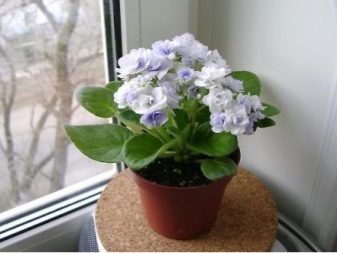
Humidity and temperature
The ideal temperature range ranges from 20 to 22 degrees Celsius above zero. With sunset, this indicator can be lowered by 2-3 degrees. So that the plant does not hurt and pleases with a thick color, protect it from sudden temperature surges and drafts. The optimum humidity in the room varies from 50 to 60%. This value is difficult to maintain during the heating season, when the air becomes drier due to batteries and heaters. To maintain comfortable conditions, a small pallet with moss or moistened expanded clay is placed next to the plant.
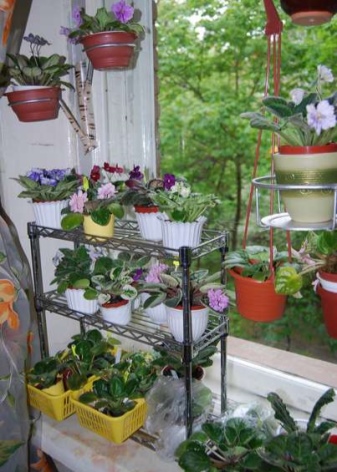
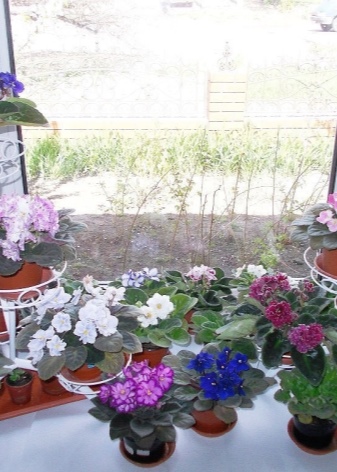
Care
Watering
Only settled water is suitable, which must be kept for at least a day. Its temperature should be about +20 degrees Celsius. The standard method of irrigation, in which water gets on the foliage, is contraindicated. Due to the dense and thickened outlet, the accumulation of moisture will lead to decay, and various diseases may also begin to develop. Experts recommend using the pallet method, in which the flower pot is placed in a container of water for about 15 minutes. During this time, the soil will absorb the required amount of moisture. Moisten the soil as soon as the top layer (about 1.5 centimeters) has dried.
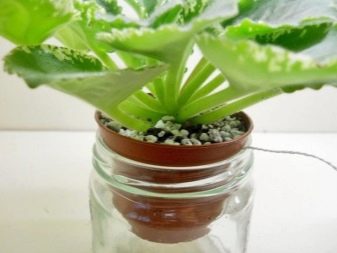
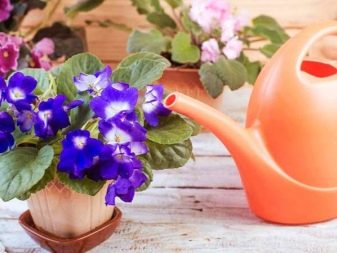
Top dressing
In order for the plant to have enough strength for a long and active flowering period, it is necessary to periodically fertilize it. It is advisable to add useful elements 2 times in 1 month. It is best to use special balanced mineral formulations that can be purchased at any flower shop. Instructions for use are available for each drug.
Important! A common mistake is to fertilize a plant for a disease that was not caused by a lack of beneficial micronutrients.
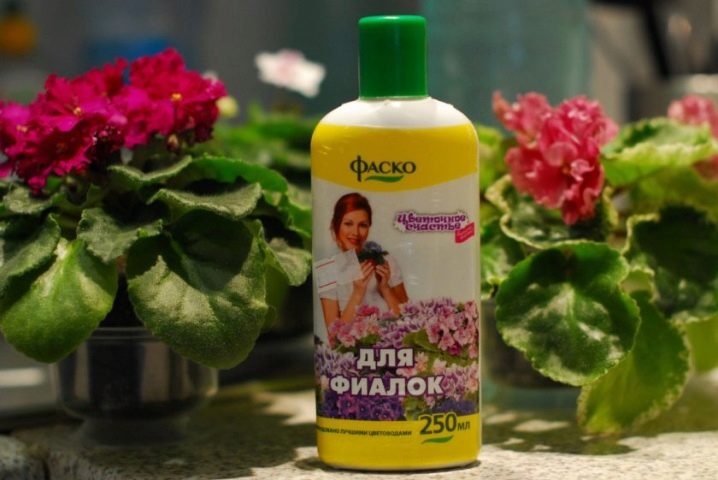
Transfer
Every year it is advisable to renew the soil in which the violet grew. The work is carried out in the spring. The shrub is carefully removed from the container, gently shaken off, trying to preserve the earthen lump as much as possible. If there are broken or diseased roots, it will get rid of them. Places of cuts are treated with crushed activated carbon. It should be noted that surface roots grow slightly deeper as they grow and do not add much in volume.
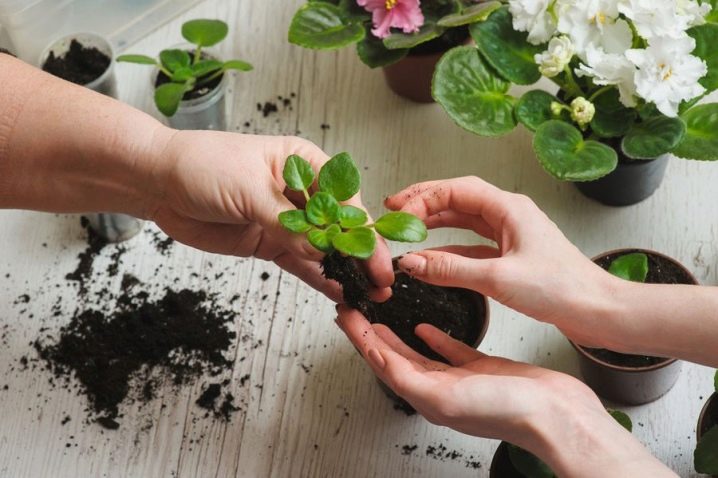
Reproduction
There are several ways to propagate a plant at home. Let's consider the most common options.
Cuttings
For reproduction in this way, a leaf is separated from the plant. He must be strong and healthy. It is best to choose a stalk from the middle row of the bush rosette. The following sequence should be followed:
- the leaf is carefully cut at an acute angle of 40–45 degrees;
- it is placed in a small container, where clean water and an activated carbon tablet are added;
- covering the leaf with a cut plastic bottle, you can create a greenhouse effect that will promote growth;
- when roots appear, the sprout can be transplanted into the ground.
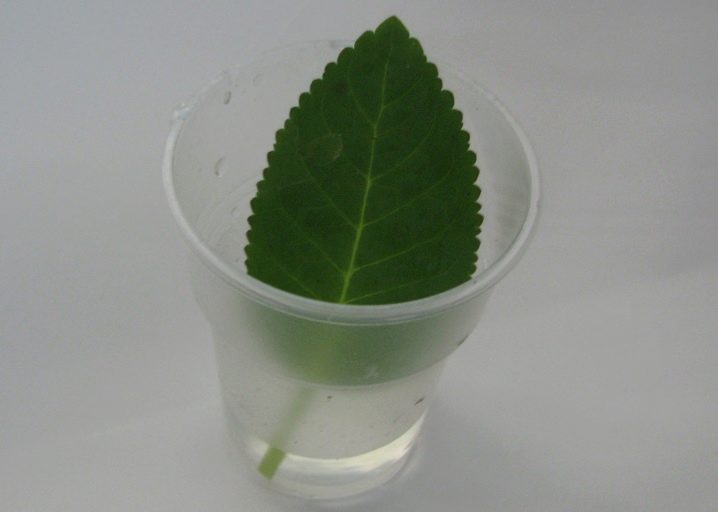
Children
You can grow a violet from children if you use a rooted leaf. The work is carried out as follows:
- the bush is taken out of the pot;
- the baby is carefully separated from the root system of the mother plant; it must have at least 2 sheets;
- a separate sprout is transplanted into a container with soil, the height of which is no more than 6 centimeters.
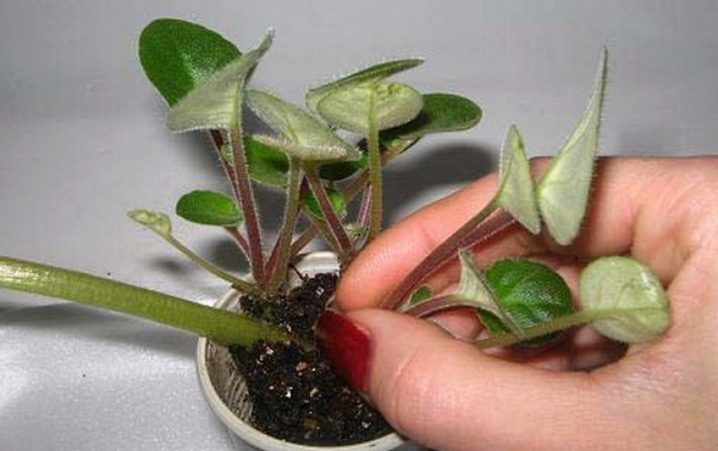
Potential diseases and pests
To prevent the plant from dying from diseases or attacks from dangerous insects, preventive measures are needed. Before transplanting, the earthen composition is recommended to be warmed up in an oven or treated with a light manganese solution. And also you need to carefully examine the plant for symptoms, at the first signal, use medications.
It is worth paying attention to the most common problems.
Root rot
This disease affects the root system of the plant. The violet begins to lose its bright color and firmness. The leaves gradually turn yellow and fall off. In this case, you need to remove the flower and examine the roots.To cope with the problem, the flower is sprayed with a solution of "Fitosporin-M" (consistency - 1.5 grams per 1 liter of water). After processing, the violet is transplanted into a clean pot with renewed soil.

Shield
It is a dangerous pest that can be identified by the presence of a gray-brown shield on the back. If you find it, transfer the violet to another place and treat it with the appropriate composition. The drug "Topsin-M" is perfect.
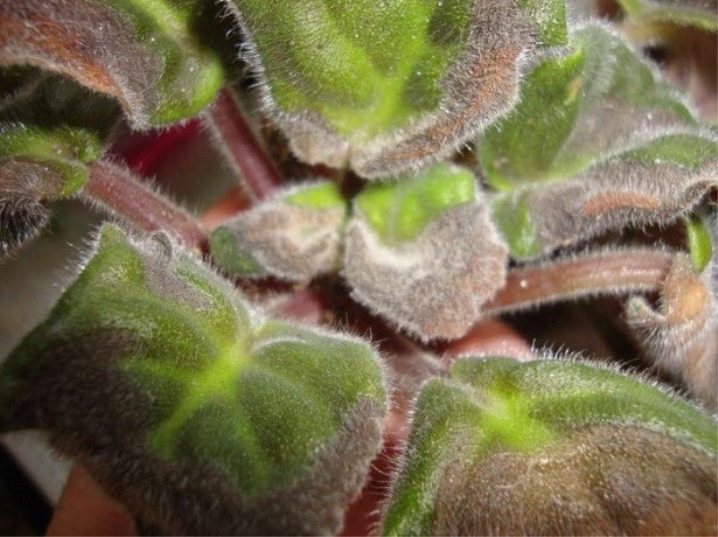
Thrips and aphids
These small sucking insects destroy the flower by feeding on its sap. To save the violet, use the composition "Agravertin" according to the instructions for use.

Gray rot
With this disease, the leaves are covered with a gray and fluffy bloom. This ailment can be overcome with means "Topsin-M".

For an overview of the "Ballerina" violet, see the next video.































The comment was sent successfully.